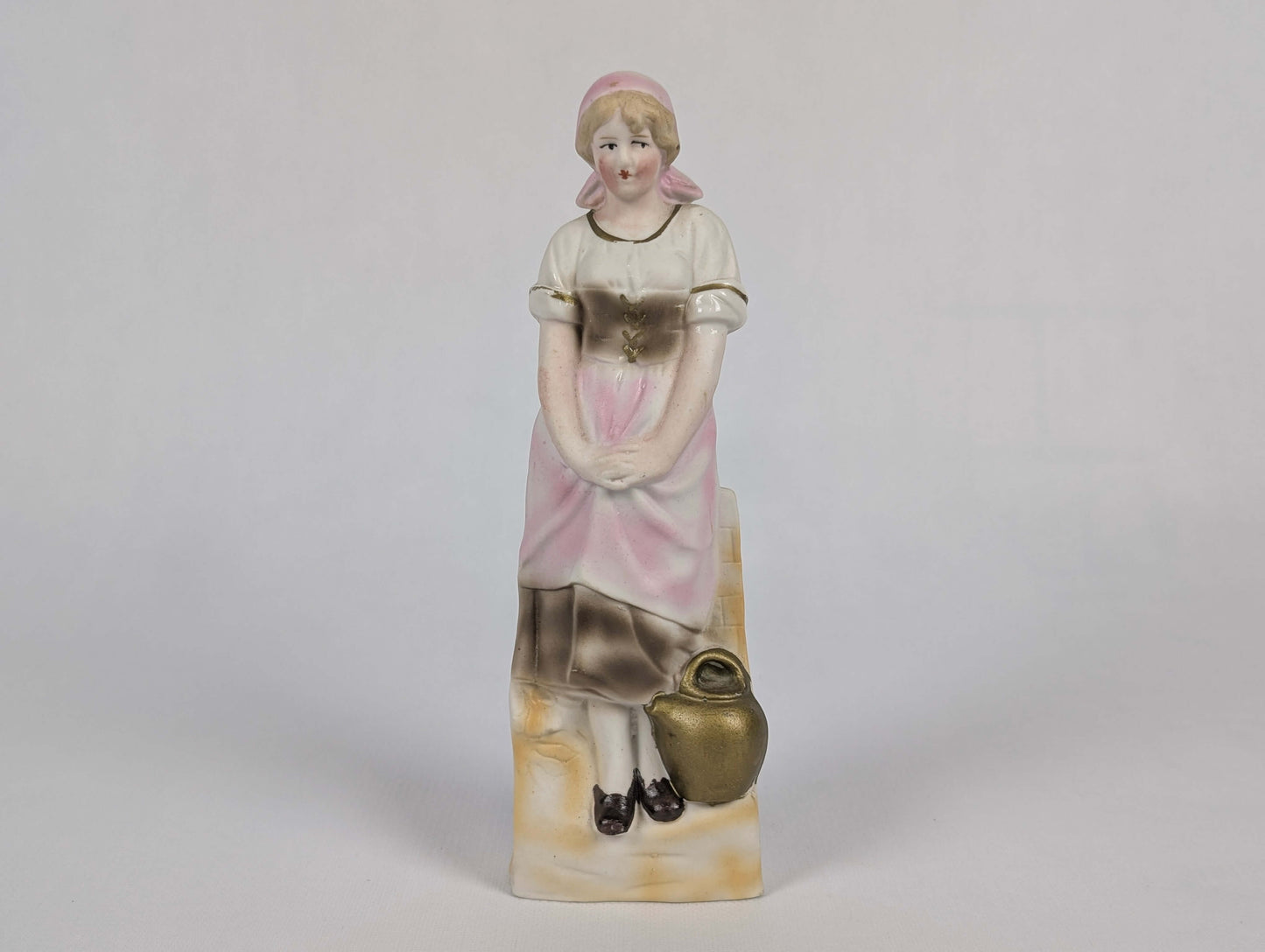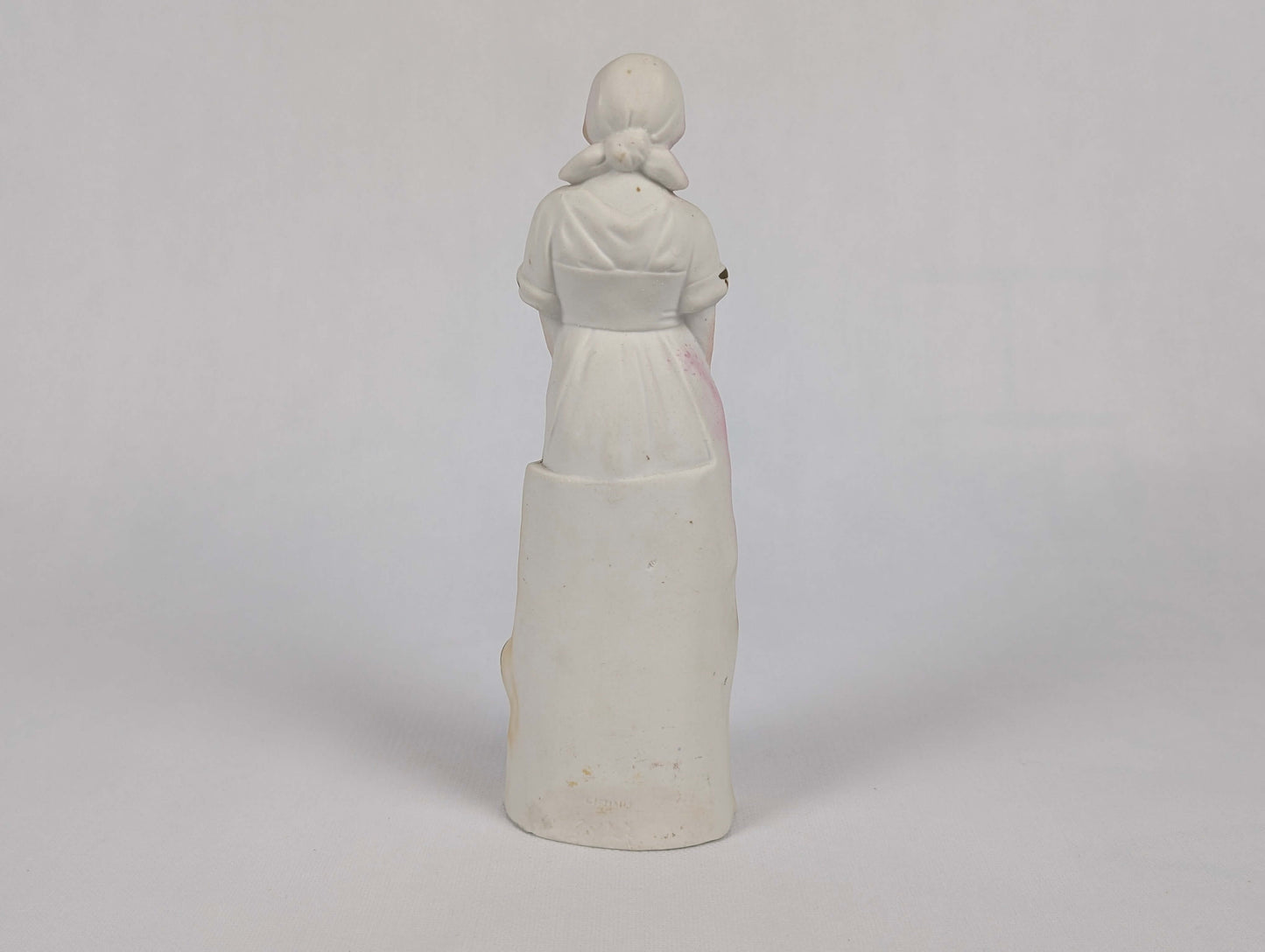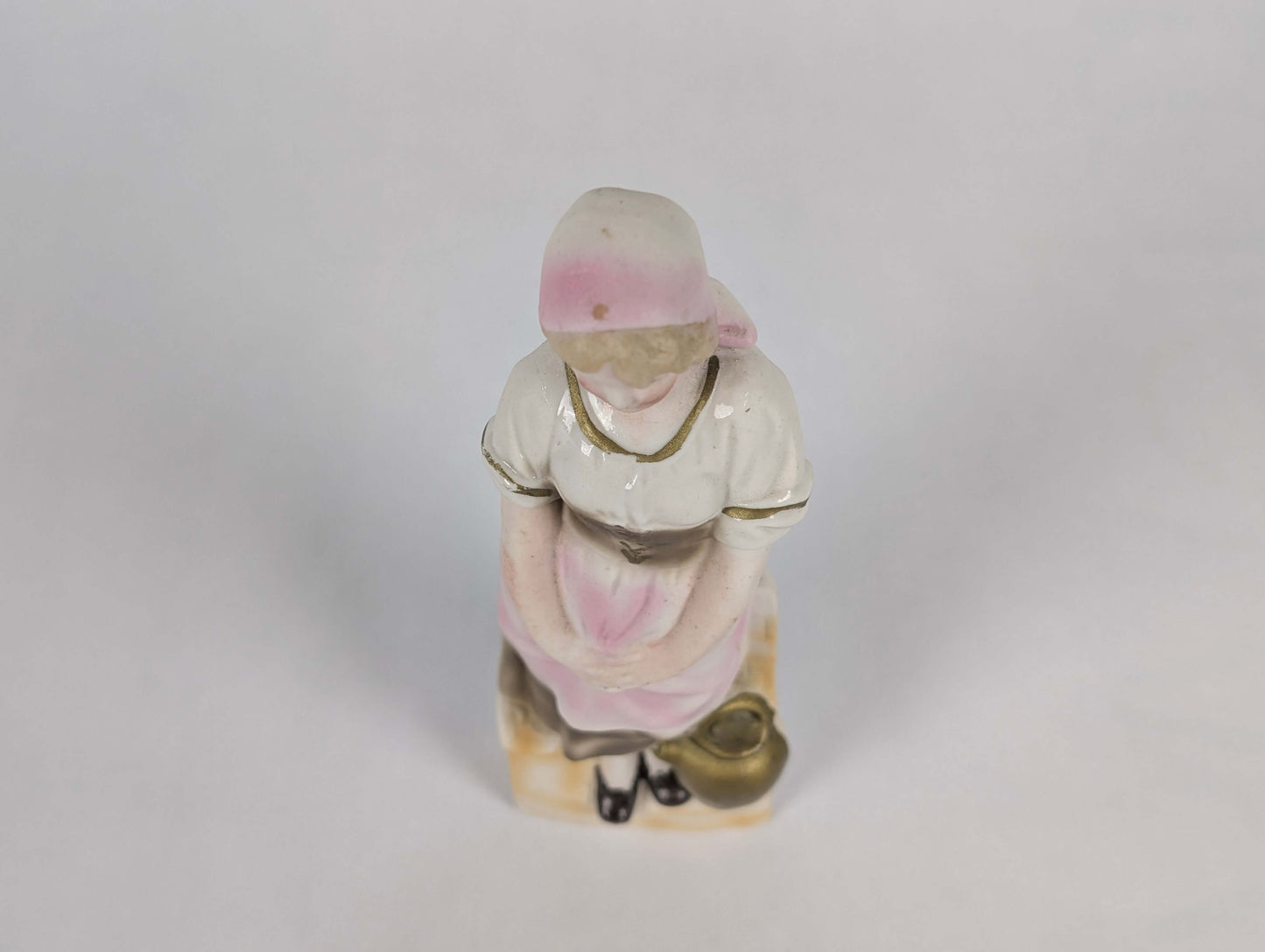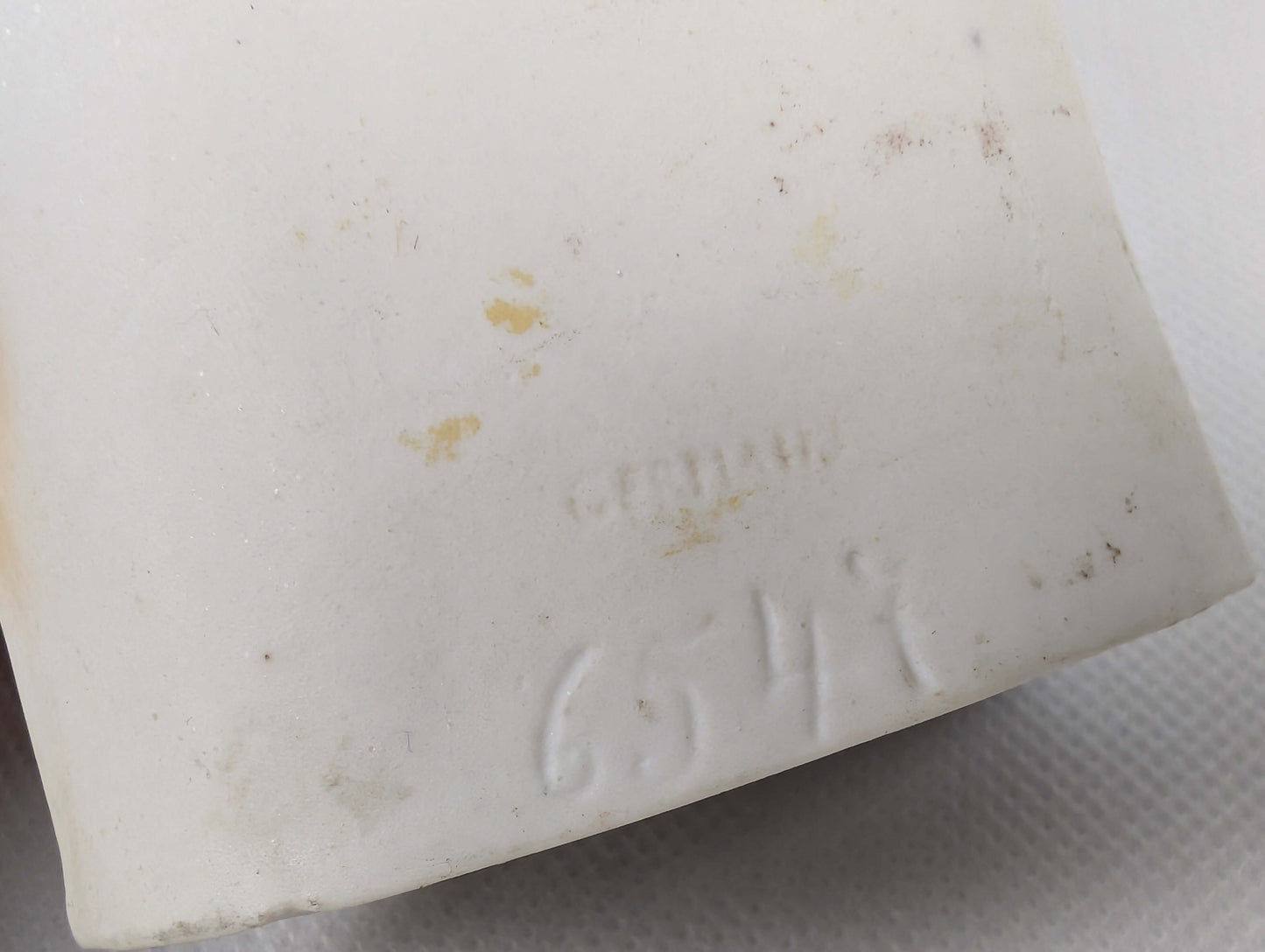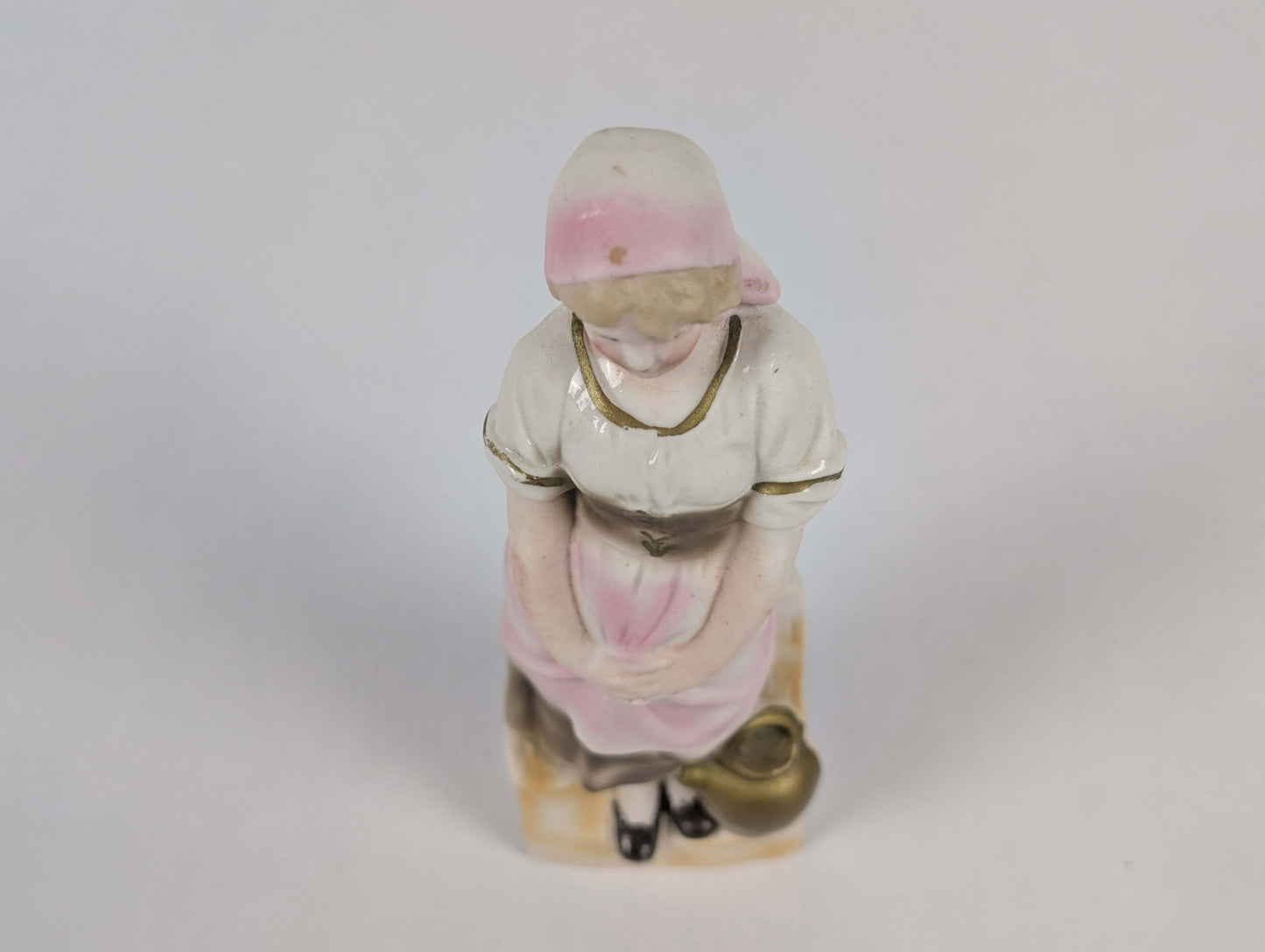Unknown
Antique German Bisque Figurine - Peasant Girl with Jug (c. 1890–1930) - Excellent Condition
Antique German Bisque Figurine - Peasant Girl with Jug (c. 1890–1930) - Excellent Condition
Antique German Bisque Figurine - Peasant Girl with Jug (c. 1890–1930) - Excellent Condition
Item Specifics
- Material: Bisque porcelain
- Colour: Soft pastels with gold accents
- Origin: Germany
- Era/Period: Late 19th to early 20th century
- Maker's Mark/Signature: Impressed "Germany 6547" on the base
- Height: 23 cm (9 inches)
- Width: Approximately 8 cm (3.15 inches)
- Weight: Approximately 300 grams
Description
This antique bisque porcelain figurine depicts a young peasant girl standing gracefully beside a water jug. She wears a delicate pastel-coloured dress with gold-accented sleeves and a pink headscarf. The figurine captures a simple yet elegant moment of daily life, a theme popular in late 19th and early 20th-century German craftsmanship. The fine detailing in her facial features and clothing folds enhances the charm of the piece. The back and underside remain unglazed, which was typical for bisque figurines from this period. At 23 cm tall, she is a beautiful statement piece, whether displayed alone or as part of a collection.
Condition & Quality Rating
⭐ Quality Rating: ★★★★☆ (Excellent)
This figurine is in excellent condition, with no chips, cracks, or repairs. The hand-painted details remain vibrant, and the gold accents are well-preserved. There is only minor surface wear consistent with its age, but nothing that detracts from its beauty. Please refer to the photos for condition details.
About German Bisque Porcelain Figurines
Bisque porcelain was highly popular in Germany during the late 19th and early 20th centuries. Factories in Thuringia, such as Hertwig & Co., Gebrüder Heubach, and Schafer & Vater, produced high-quality unglazed porcelain figurines for export. The "Germany" mark and mold number "6547" suggest this piece was manufactured during this era, likely for export to the European or American market. The "Germany" stamp became a common marking after 1891 due to export regulations, particularly following the McKinley Tariff Act, which required items to be clearly labeled with their country of origin for international trade. Many of these figurines were designed to depict scenes of rural life, domesticity, or romanticized everyday moments.
Collectability
This figurine is a fine example of German bisque craftsmanship, making it highly collectible. Its historical significance, combined with its detailed hand-painted features and gold accents, sets it apart. The mold number suggests it was part of a series, adding to its rarity and appeal for collectors who appreciate early 20th-century German porcelain artistry. Pieces from this period are valued for their attention to detail and cultural themes, making them sought-after additions to antique collections.
How This Item Was Made
This figurine was crafted using a multi-step process that was common in German porcelain factories between 1890 and 1930. The bisque porcelain was slip-cast into a mold, fired at a high temperature to achieve its matte, unglazed texture, and then carefully hand-painted. Gold accents were often applied as a final touch before a second firing.
The lack of a manufacturer's mark suggests it may have been made by a workshop that primarily focused on export production. Some German porcelain factories omitted their marks when producing pieces for mass export, as these figurines were often sold under different distributors or retailers rather than directly from the factory itself. This practice helped streamline production and allowed various sellers to rebrand the pieces as their own.
Additional Notes
- The mold number "6547" indicates it was part of a larger series of similar figurines.
- The unglazed back is typical of bisque figurines meant for decorative display.
- The figurine's size and design suggest it was originally sold as a decorative object rather than a toy.
- Similar figurines from this era are often attributed to Hertwig & Co. or Gebrüder Heubach, but exact attribution is difficult without additional marks.
Recommendations for Care
- Dust gently with a soft, dry cloth to avoid damaging the delicate surface.
- Avoid exposure to direct sunlight, which can cause fading over time.
- Do not use water or cleaning solutions, as bisque porcelain is porous and can absorb moisture.
- Store or display in a secure location to prevent accidental knocks or falls.
Share in the joy of discovery! – with The Recollection Room
Share
Couldn't load pickup availability

